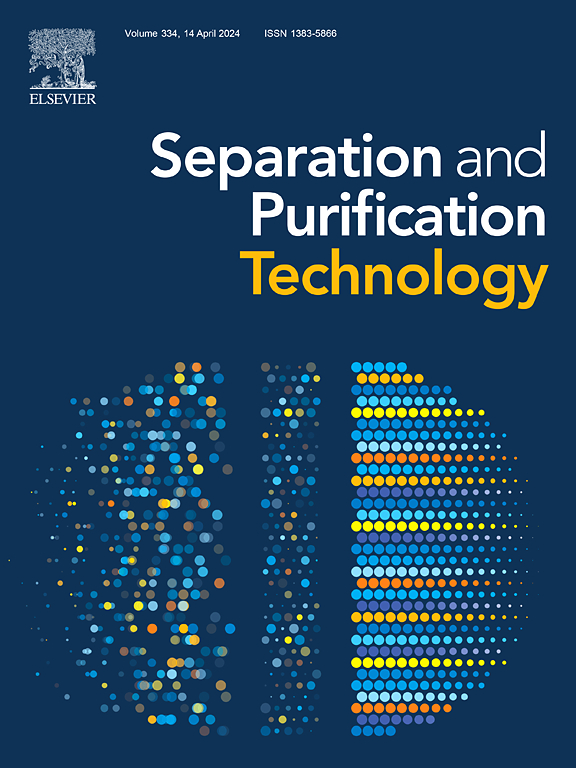Selective metal recovery from ternary lithium-ion battery cathodes via potential-controlled electrodeposition in deep eutectic solvents
IF 9
1区 工程技术
Q1 ENGINEERING, CHEMICAL
引用次数: 0
Abstract
This study presents a potential-controlled electrodeposition strategy for selectively recovering nickel (Ni), cobalt (Co), and manganese (Mn) from leachates of ternary lithium-ion battery cathodes using a choline chloride (ChCl)-urea deep eutectic solvent (DES). Results demonstrate that remarkable leaching efficiencies for all target metals (91.2 %, 99.0 %, and 95.7 %, for Ni, Co, and Mn, respectively) were successfully achieved at 150 ℃. Upon cooling, it is observed that a majority of Ni2+ was separated through spontaneous precipitation, enabling preliminary fractionation of the leachate. Sequential electrodeposition at −1.1 V, −1.75 V, and −0.8 V facilitated the selective recovery of Co, Mn, and Ni, respectively, with high purity confirmed by structural and elemental analyses. Compared to conventional recycling methods, this approach enables efficient metal separation without the need for additional chemical additives and within relatively short electrodeposition time (2 h). These findings highlight a practical route for developing additive-free, energy-efficient, and environmentally friendly recycling technologies for spent lithium-ion battery cathodes using DES systems.
在深共晶溶剂中通过电位控制电沉积从三元锂离子电池阴极中选择性回收金属
本研究提出了一种电位控制的电沉积策略,利用氯化胆碱(ChCl)-尿素深度共晶溶剂(DES)从三元锂离子电池阴极的浸出液中选择性地回收镍(Ni)、钴(Co)和锰(Mn)。结果表明,在150℃条件下,所有目标金属的浸出效率分别为91.2 %、99.0 %和95.7% %,镍、钴和锰的浸出效率分别为91.2 %、99.0 %和95.7% %。冷却后,观察到大部分Ni2+通过自发沉淀分离,使渗滤液得以初步分馏。在−1.1 V,−1.75 V和−0.8 V下依次电沉积有利于Co, Mn和Ni的选择性回收,并通过结构和元素分析证实了其高纯度。与传统的回收方法相比,这种方法可以实现高效的金属分离,而不需要额外的化学添加剂,而且电沉积时间相对较短(2 h)。这些发现为开发使用DES系统的废锂离子电池阴极的无添加剂、节能和环保回收技术提供了一条切实可行的途径。
本文章由计算机程序翻译,如有差异,请以英文原文为准。
求助全文
约1分钟内获得全文
求助全文
来源期刊

Separation and Purification Technology
工程技术-工程:化工
CiteScore
14.00
自引率
12.80%
发文量
2347
审稿时长
43 days
期刊介绍:
Separation and Purification Technology is a premier journal committed to sharing innovative methods for separation and purification in chemical and environmental engineering, encompassing both homogeneous solutions and heterogeneous mixtures. Our scope includes the separation and/or purification of liquids, vapors, and gases, as well as carbon capture and separation techniques. However, it's important to note that methods solely intended for analytical purposes are not within the scope of the journal. Additionally, disciplines such as soil science, polymer science, and metallurgy fall outside the purview of Separation and Purification Technology. Join us in advancing the field of separation and purification methods for sustainable solutions in chemical and environmental engineering.
 求助内容:
求助内容: 应助结果提醒方式:
应助结果提醒方式:


